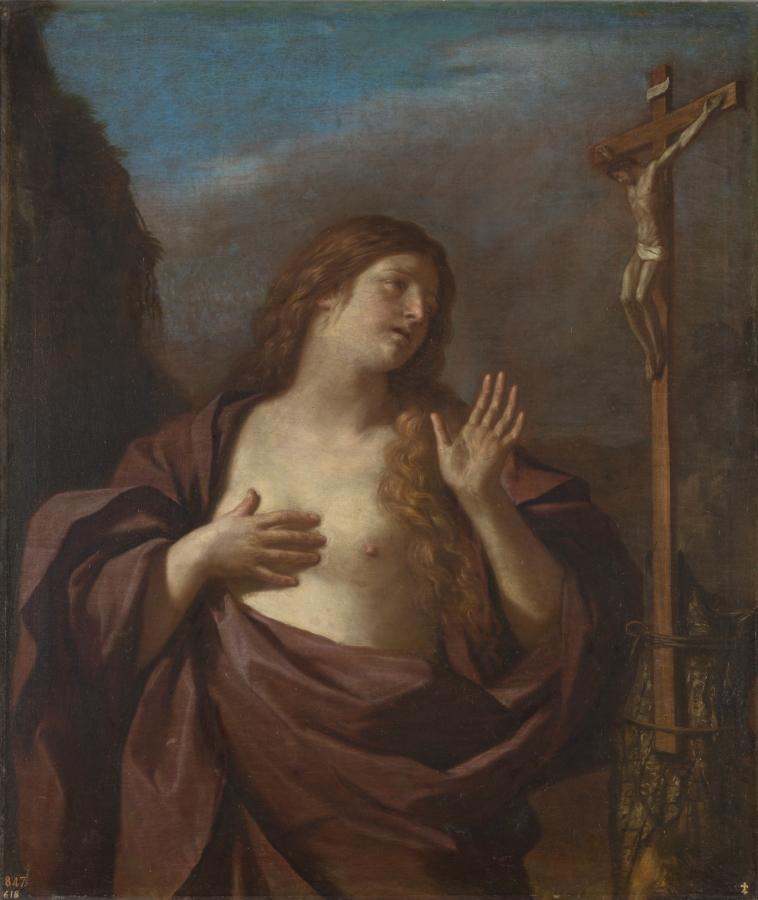Guercino (1591-1666)
Maddalena penitente (Mary Magdalene in Penitence)
1645–1649
Oil on canvas, 119.8 x 101.2 cm
Museo del Prado, Madrid
Mary Magdalene is one of the most famous saints in Christianity, for having known Christ and because she represented the paradigm of the repentant woman. In her worldly stage of life, she is usually characterized by rich clothing. When she is shown as a repentant woman -as in this painting by Guercino– she appears half-naked and with long hair, adoring the crucifix. Two other of her most recognizable attributes, not present in this work, are the skull -symbol of meditation on death- and the glass of perfumes, with which she washed Christ’s feet. Unlike other paintings by Guercino in the Museo del Prado, Penitent Magdalene is still a little-known work. Indeed, it was not included in the studies that rehabilitated the figure of the artist, such as those by Nefta Barbantini or Denis Mahon, both published in 1968, despite the fact that Professor Pérez Sánchez had previously called attention to the painting and confirmed its correct authorship. The first documentary news about the canvas appears in the inventory of the royal palace of La Granja in 1746, then belonging to the collection of Queen Isabel de Farnesio, Felipe V’s wife: An original painting on canvas by the Guercino of Santa María Magdalena contemplating a Crucifix with one hand on the chest and the other raised four feet and three fingers high and three and a half feet wide. In the lower right corner of the painting you can see the fleur de lis, identifying the pieces belonging to the Isabel de Farnesio collection. Although it is a work of remarkable quality and there is no doubt about its attribution, it still raises chronological problems. Traditionally a late dating has been proposed, appreciating traces of Guido Reni’s painting whom Guercino approached in the last phase of his production. Contrary to that opinion, Stone suggested a date close to the end of the 1640s, when there is news of Guercino‘s realization of a painting whose description fits the characteristics of the penitent Magdalene, a painting acquired on May 20, 1649. by the artist Lodovico Fermi. On the other hand, to confirm this chronological proposal, Stone convincingly related the style and iconography of the painting in the Museo del Prado with the composition of the same subject currently kept in a private collection in New York. The canvas was deposited at the Museo de Castellón between 1936 and 1970, the date on which it was included in the exhibition held at the Museo del Prado on Italian Painting of the 17th century. A lower quality replica is preserved in the Galleria Spada in Rome (Text taken from Úbeda de los Cobos, A. in: El Prado en el Hermitage, Museo Nacional del Prado, 2011, pp. 102-103).
